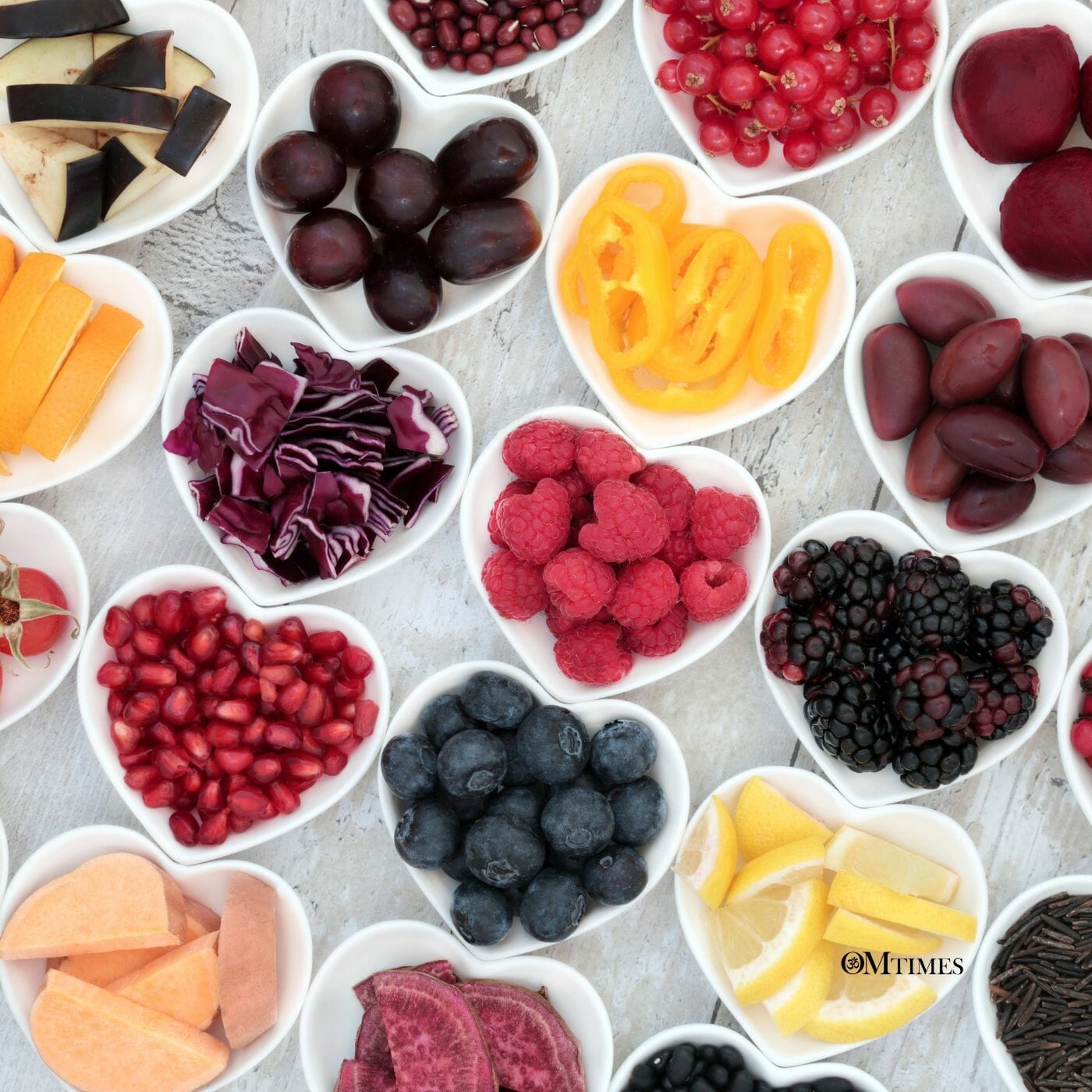Why Antioxidants? When to Fight Free Radicals

More studies show that antioxidants improve health, especially when related to free radicals and various cancers.
Why Antioxidants Are Necessary When Fighting Free Radicals
Colorectal cancer, cancer of the colon or rectum, is a disease that affects both men and women and is preventable nearly 90 percent of the time. Starting at age 50, men at women at average risk for the disease should get screened. Those with increased risk, like African-Americans who typically develop colorectal cancer at younger ages, should be screened even earlier.
Prevention techniques include regular screenings, a healthy diet, and regular exercise. If detected, colorectal cancer requires surgery in nearly all cases for a complete cure, sometimes in conjunction with radiation and chemotherapy. Between 80 and 90 percent of patients are restored to normal health if the cancer is detected and treated in the earliest stages. However, the cure rate drops to 50 percent or less when diagnosed in the later stages.
Antioxidants Fight Free Radicals
Free radicals are atoms or groups of atoms with at least one unpaired electron, making them highly reactive. Free radicals promote beneficial oxidation that produces energy and kills bacterial invaders. However, in excess, they produce harmful oxidation or oxidative stress that can damage cell membranes and cell contents. These free radicals cause inflammation.
In human beings, free radicals are the natural by-products of many processes within and among cells. Free radicals are created by exposure to various environmental factors, cigarette and tobacco smoke, air pollution, alcohol, drugs, radiation from televisions and computers, chemicals, and a busy, stressful life.
These factors stimulate molecules in the body called transcription factors. The transcription factor is any protein required to initiate or regulate transcription, including both gene regulatory proteins as well as the general transcription factors. These chemical messengers signal DNA to start producing protein, which gives direction to the cells in our body. Transcription factors in the body are harmless until free radicals activate them. Free radicals cause the transcription molecules to migrate to the center of the nucleus. Several transcription factors become pro-inflammatory due to free radicals, accelerating the aging process.
NF-kB transcription factor complex is one of the cellular sensors which responds to oxidative stress and regulates gene expression. NF-kB can increase the activity of genes responsible for inflammation. DNA binding activities of two other transcription factors, AP-1, and Sp-1, are seen as inflammatory agents when activated by free radicals.
Other inflammatory markers such as C-reactive protein, homocysteine, and fibrinogen show that these blood indicators of inflammation are strong predictive factors for determining who will suffer a heart attack. Seemingly unrelated diseases have a common link. People who have multiple degenerative disorders often exhibit excess levels of inflammatory markers in their blood. A growing consensus among scientists is that common disorders such as atherosclerosis, colon cancer, and Alzheimer’s disease are all caused in part by a chronic inflammatory syndrome.
Antioxidants Are Necessary
More and more evidence is accumulating that indicates antioxidants improve long-term health by deferring or mitigating cardiovascular and cerebrovascular diseases. Exercise-related research indicates that antioxidants such as vitamin E and selenium limit exercise-induced muscle damage; this, in turn, is believed to improve exercise recovery and possibly improve muscle growth potential. Of course, as vitamins C and E and selenium are among the most effective antioxidants, they and others are part of most multivitamin/mineral packs. However, here are some additional antioxidants you may want to consider taking with the baseline supplementary daily intake.
Research suggests that combining antioxidants is more effective than consuming high doses of just one or two antioxidants. Fresh fruits and vegetables are rich in a wide variety of antioxidants; these foods may better preserve the essential antioxidants. Herbal supplements like milk thistle, rosemary, ginkgo biloba, bilberry, butcher’s broom, and horse chestnut have high levels of potent antioxidants. However, their effects on exercise have not yet been studied in humans.
Black and Green Tea
For years, studies have indicated that the antioxidants in green tea offer protection against diseases, including cancer, and even fight dental cavities. One of the most beneficial of these antioxidants is called epigallocatechin gallate (EGCG). According to the University of California Wellness Letter, March 2002, regular black tea is turning out to be just as healthful as green tea. The evidence for tea’s health effects comes mainly from lab studies, though some human studies point to possible benefits in preventing heart disease and cancer. EGCG inhibits an enzyme that cancer cells need in order to grow. The cancer cells that couldn’t grow big enough to divide self-destructed. It would take about 4-10 cups of green tea a day to get the blood levels of EGCG that inhibited cancer in the study. Black tea also contains EGCG but at lower concentrations.
Sugar and Inflammation
One of the reasons inflammation occurs is a rapid rise in blood sugar, which causes biochemical changes in the cell. Staying away from sugar and high-glycemic (simple) carbohydrates, which the body rapidly converts to sugar, is one of the best ways to decrease inflammation. C-reactive protein (CRP) is a key factor in inflammation. In a major study published in the New England Journal of Medicine, people with elevated CRP levels were four and one-half times more likely to have a heart attack. Not only is elevated CRP more accurate than cholesterol in predicting heart attack risk, but high CRP levels have turned up in people with diabetes and pre-diabetes and in people who are overweight.
When blood sugar goes up rapidly, sugar can attach itself to collagen in a process called “glycosylation,” or the Browning Reaction, increasing inflexibility and inflammation. CRP is not found in foods. However, its levels in the body are strongly influenced by diet.
A recent study by Simin Liu, M.D., Ph.D., of the Harvard Medical School found that women who ate large amounts of high-glycemic (or diabetes-promoting) carbohydrates, including potatoes, breakfast cereals, white bread, muffins, and white rice, had very high CRP levels. Women who ate a lot of these foods and were also overweight had the highest and most dangerous CRP levels.
The body makes CRP from interleukin-6 (IL-6), a powerful inflammatory chemical. IL-6 is a key cell communication molecule that tells the body’s immune system to go into asperity, releasing CRP and many other inflammation-causing substances. Being overweight increases inflammation because adipose cells make large amounts of IL-6 and CRP, particularly those around the midsection. As blood sugar levels increase, so do IL-6 and CRP. Both overweight and high blood sugar levels increase the risk of heart disease, very likely because of the undercurrent of inflammation.
The best way to deal with cravings is to carefully control blood sugar and insulin by avoiding simple carbohydrates and eating more protein. In a few days, blood sugar will stabilize, and cravings will go away. Good (complex) carbohydrates, which are low on the glycemic index, include apples, asparagus, beans, broccoli, blackberries, blueberries, cabbage, cantaloupe, citrus fruits, green beans, honeydew melon, kiwi, leafy greens, peaches, pears, plums, raspberries, spinach, strawberries.
Bad (simple) carbohydrates, which are high on the glycemic index, include bananas, breads, carrots, cereals processed with added sugar, corn, French fries, French toast, fruit juices, mangoes, pancakes, papaya, pasta, peas, popcorn, white potatoes, white rice, sugar, waffles.
Dietary fats also influence inflammation. Most omega-6 fats, found in margarine and corn and safflower oils, are the basic building blocks of arachidonic acid and prostaglandin E2, two of several key inflammation-causing substances in the body. In contrast, omega-3 fats, found in fish, fish oils, and vegetables, have an inflammation-suppressing effect.
Balance the Body’s pH
It is important to keep the body as pH balanced as possible. Most people’s diets tend to be more on the acidic side. Therefore, eating more alkaline-forming foods (plant-based) helps to maintain a proper pH balance. Eat foods such as non-citrus fruits and plenty of vegetables, some dairy such as cottage cheese and yogurt, organic skinless chicken, turkey or grass feed, lean beef, and fish. Buy dried beans such as garbanzo beans and black beans, consider whole grains such as brown rice and oats, as well as a handful of healthy fats in nuts and seeds.
Add Healthy Seasonings
There are very beneficial herbs containing antioxidant, antimicrobial, and antifungal properties. Consider cinnamon, ginger, curry powder, turmeric, onions, garlic, and stevia.
You will also enjoy Andrew Pacholyk: Spiritual Journey through Life’s Seasons
Click HERE to Connect with your Daily Horoscope on OMTimes!
Visit Our Astrology Store for Personalized Reports
About the Author
Connect with Andrew Pacholyk MS L.Ac at peacefulmind.com “Living Life, Consciously” Alternative medicine and therapies for healing mind, body & spirit!
This article was originally published Apr 25, 2016
OMTimes is the premier Spiritually Conscious Magazine. Follow Us On Facebook, Twitter, Instagram, Linkedin, Pinterest, and Youtube
Andrew Pacholyk, MS, L.Ac. has been in the alternative health field for over 18 years. He is an expert in treating infertility and gynecology, pain management and anti-aging therapies. His knowledge, expertise and clinical training has offered him the ability to experience and continually learn about the body and its energy system in health as well as in disease.













